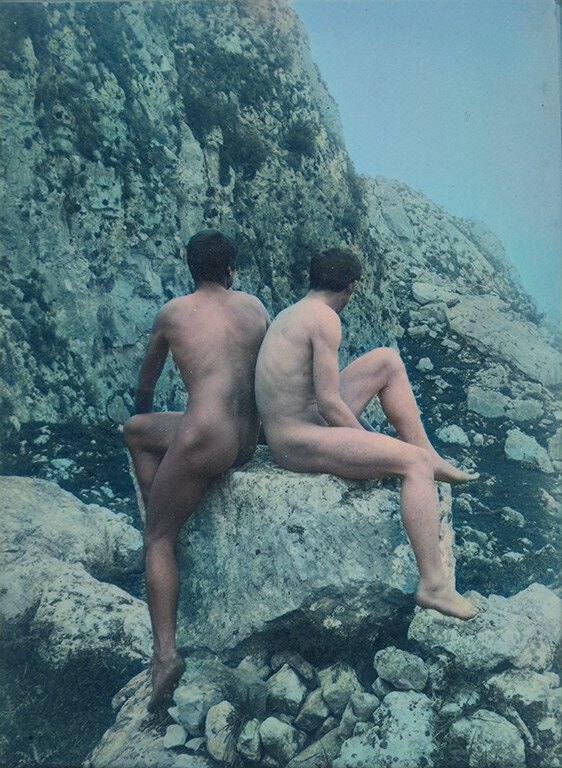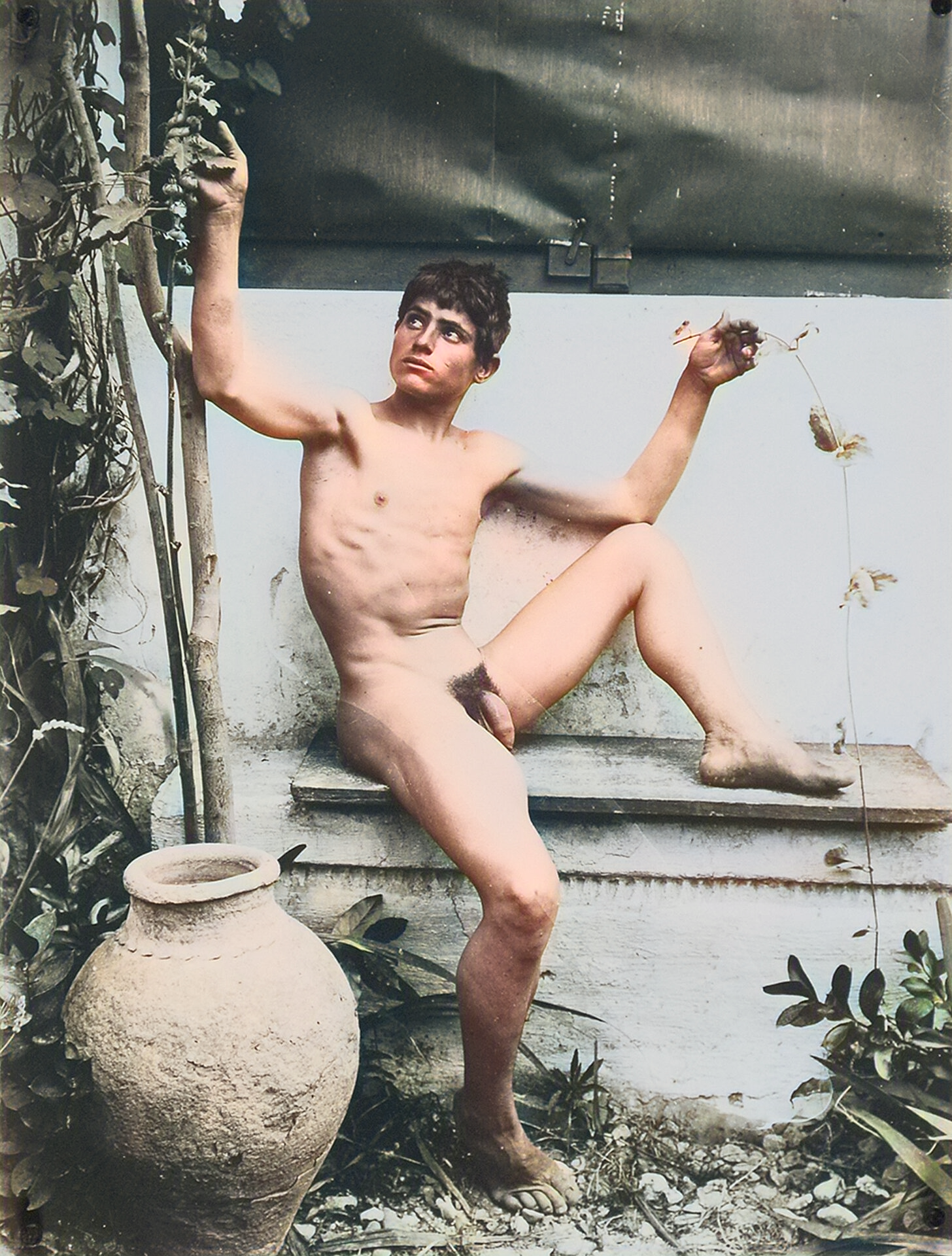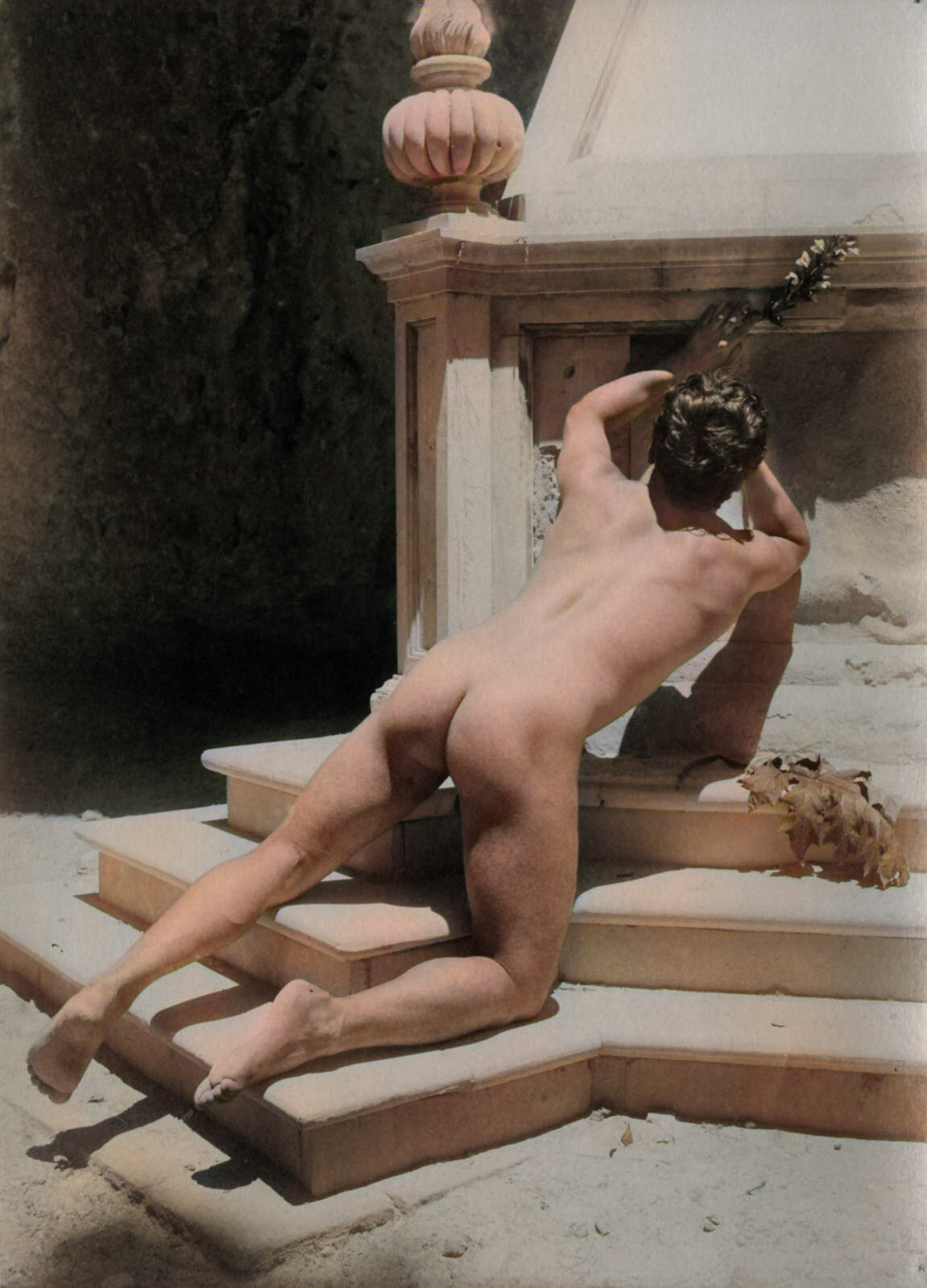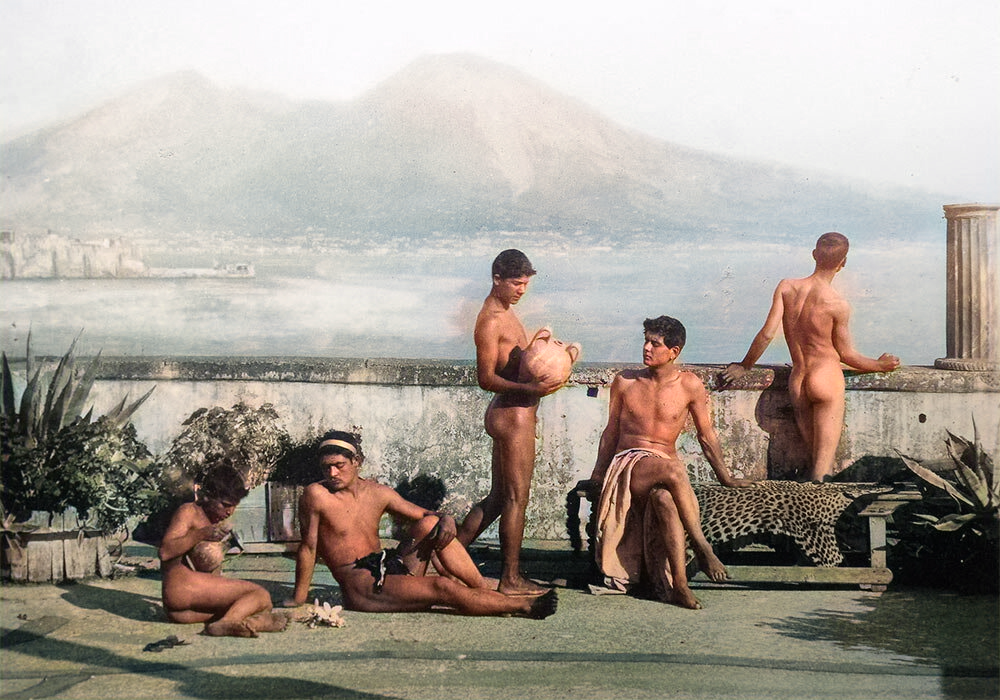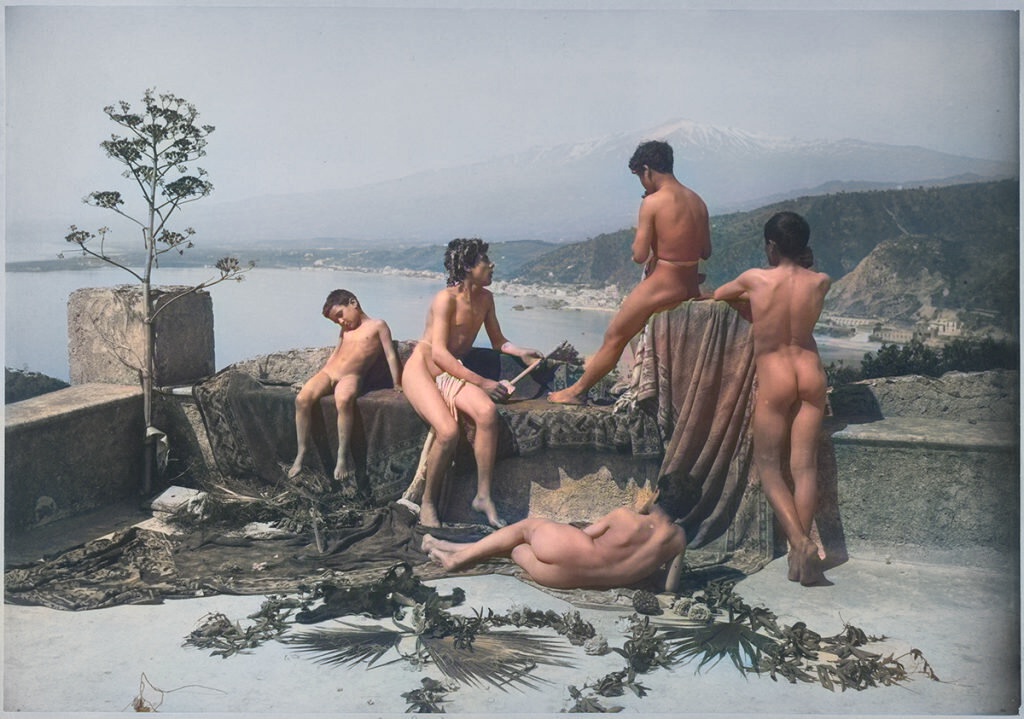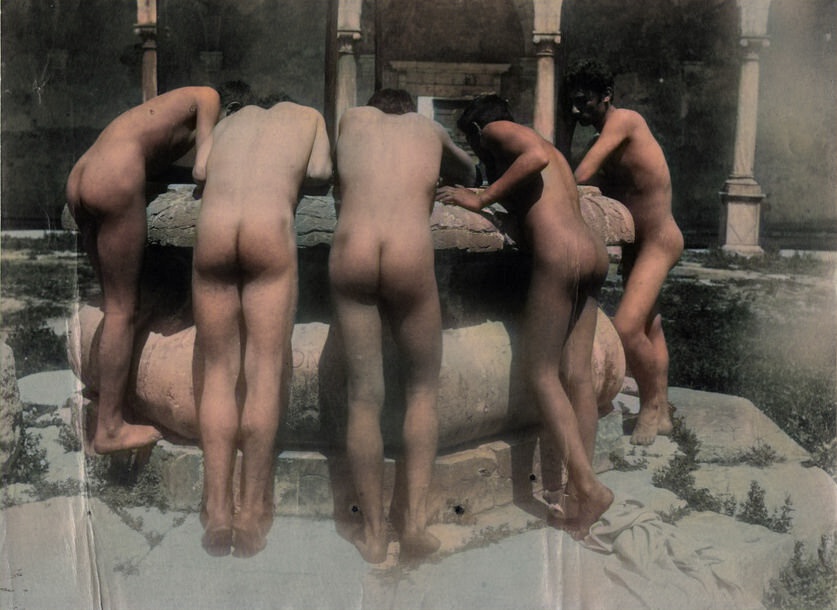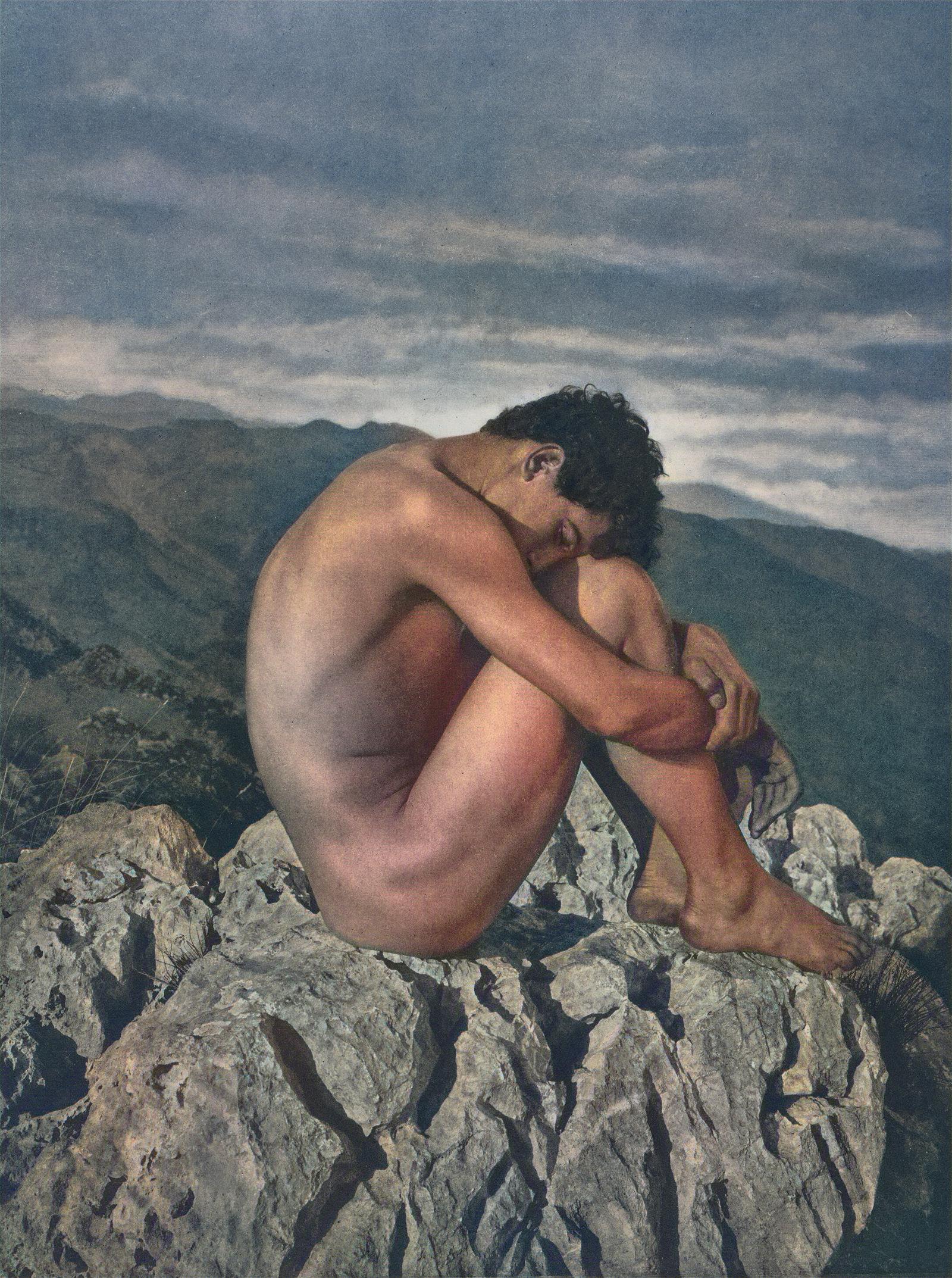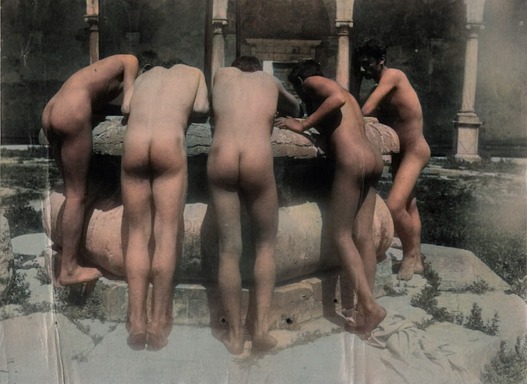The
Wilhelm von Gloeden
project
Preserving Beauty, History and Controversy.
In HBO’s The White Lotus: Sicily, sunlit opulence masks voyeuristic discomfort. The second season unfolds like a fever dream of erotic unease and social unraveling. Beneath the luxury lies something older, more mythic. Mike White’s recurring use of nude male imagery, class friction draws from a deeper visual lineage—one that can be traced, consciously or not, to the work of Wilhelm von Gloeden.
At the turn of the 20th century in the hills of Taormina, von Gloeden—a German aristocrat with a camera—constructed a visual language that eludes easy definition. His portraits of young men, draped in classical gestures and adorned with olive wreaths and amphorae, are as serene as they are provocative. Created in a deeply unequal society, these images blur the boundaries between art and anthropology, mythology and documentary, gaze and gesture.
What remains today are fragile prints and fading negatives—artifacts of a world caught between idealism and imbalance. The young men in von Gloeden’s images were not mythic figures, but locals of modest means, transformed into symbols for a foreign audience. That transformation still unsettles us—not for what it reveals, but for how much it leaves unsaid.
In our current cultural moment—obsessed with spectacle, seduction, and the downfall of privilege—von Gloeden’s legacy feels strangely present. His influence lingers not only in aesthetics, but in questions we still haven’t resolved: Who gets to look? Who gets seen? And at what cost?
In an era of visual overload and algorithmic curation, von Gloeden’s work reminds us that some images endure not because they are simple, but because they are unresolved. Their beauty resists translation; their meaning invites inquiry. And their preservation, in all its complexity, reflects our belief that art’s deepest truths lie not in answers, but in the felt presence of what transcends language.

Some images were never meant to disappear.
We look, still unsure
circa early 1900s
Taormina, Sicily
The Baron
In early 20th-century Taormina, the camera became a currency. Wilhelm von Gloeden photographed young men from working-class families—fishermen’s sons, shepherds, boys who lived close to the land. He dressed them in classical robes, posed them as gods, and sold the images to European elites who saw myth, not labor.


The viewer is never neutral.
We’re implicated.
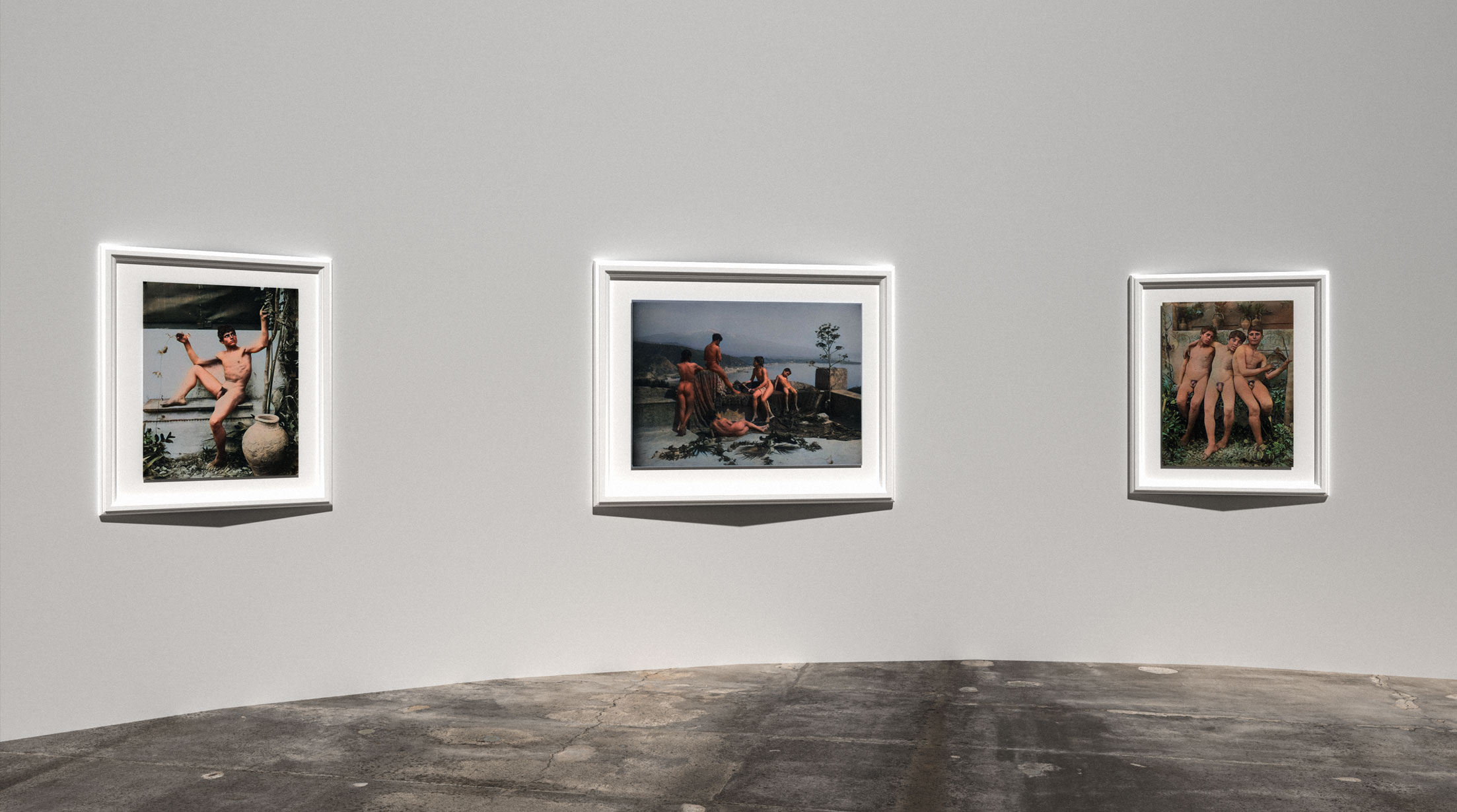
Wilhelm von Gloeden lived and worked in Taormina, Sicily, where, beginning in the late 19th century, he created some of the most hauntingly beautiful and controversial portraits in photographic history. His images—young men posed in classical gestures against the sunlit ruins of Southern Italy—blurred the lines between myth and documentary, art and anthropology.
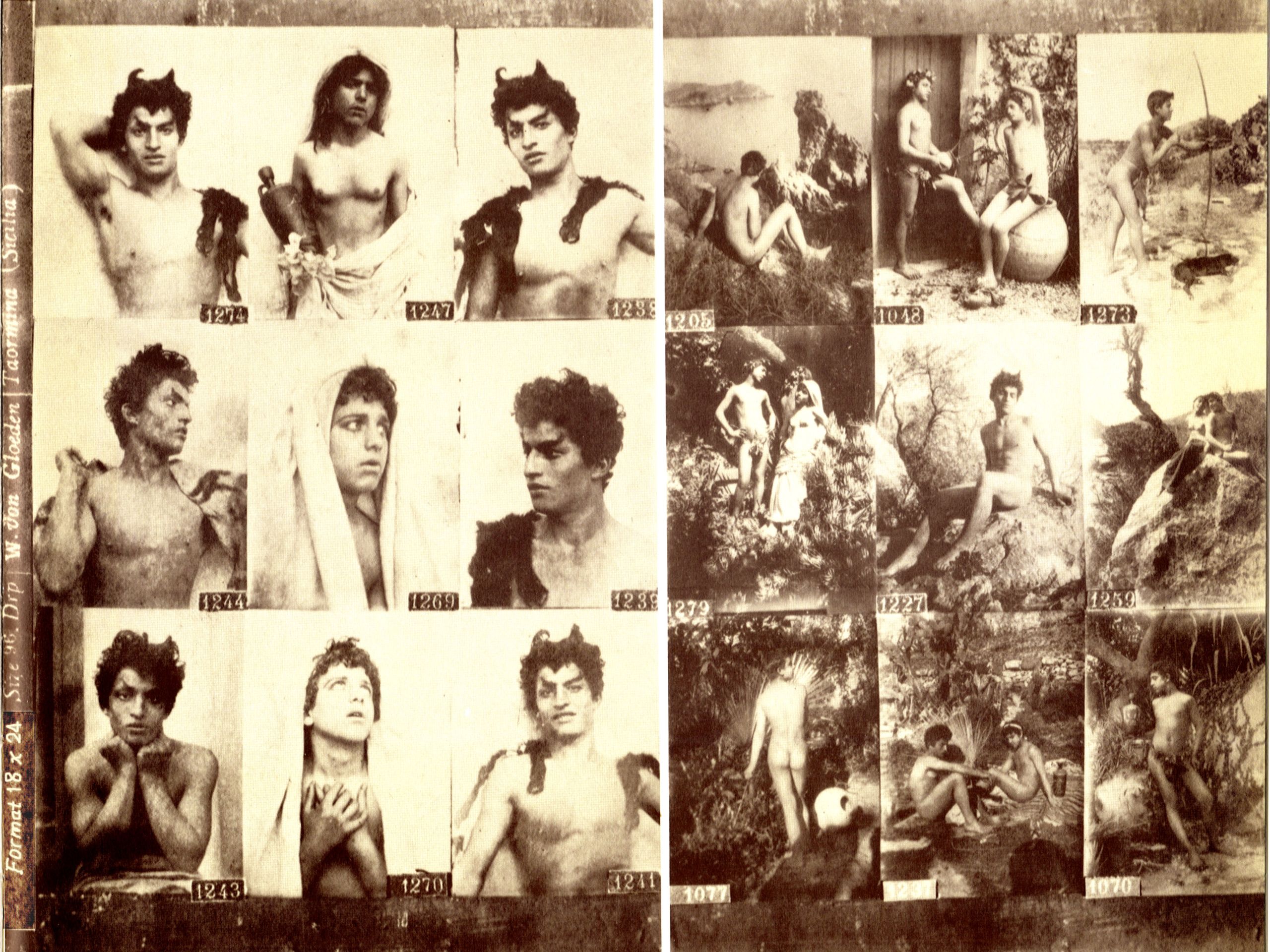
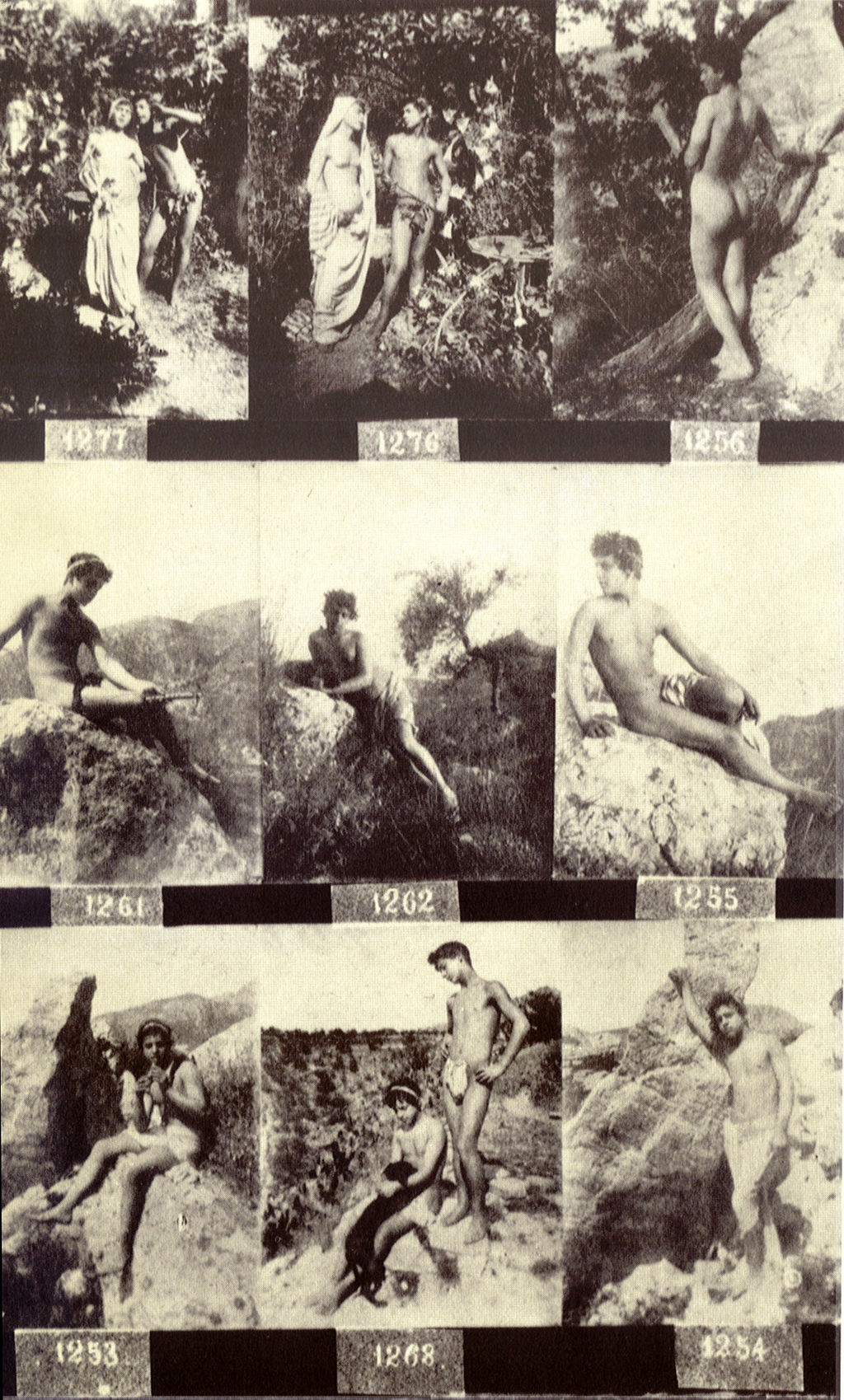
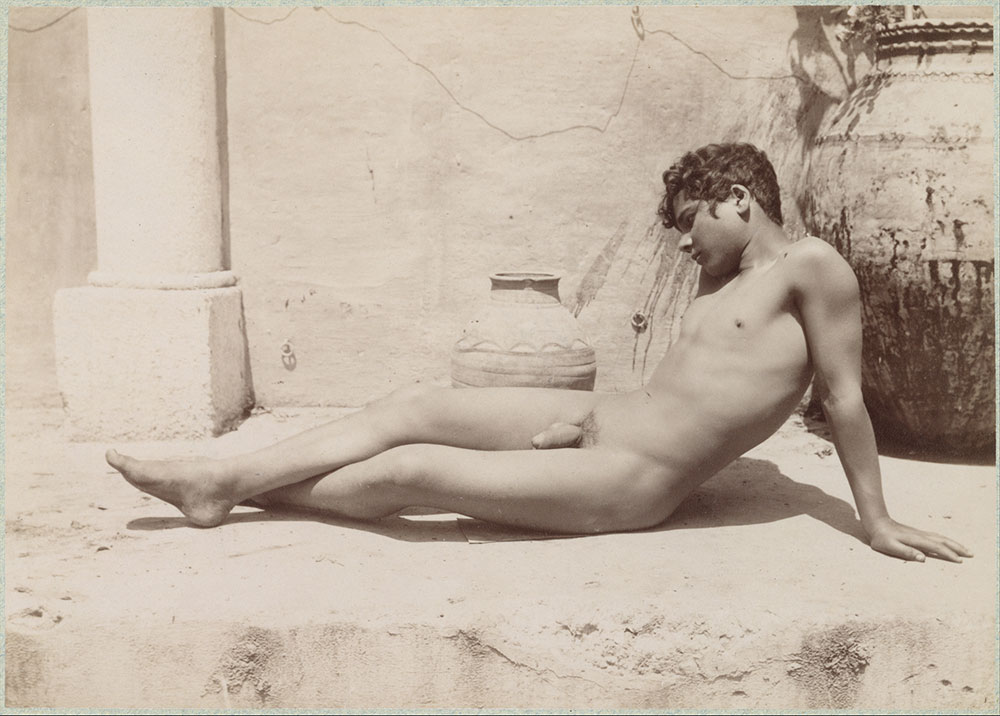
Reclining Male Nude Beside Vase
Wilhelm von Gloeden
Albumen silver print from glass negative, 1890s–1900s
16.4 × 23.2 cm (6 7/16 × 9 1/8 in.)
Collection of The Metropolitan Museum of Art
